Minority marriages Of Bangladesh
( Article By
Rahat Uddin Jewel
Bangladesh )
Various types of wedding ceremonies have been practiced among ethnic minorities for a long time. The distinctive identity of this community is also found through their marriage customs. There are some such tribal weddings here. Three days or five days before the wedding, the wedding stage is arranged by the Jagamajhi (tribal head). After that, after burying the branch of mahua tree, three raw turmeric, five futo kadi and three durbagas tips and three atap rice mixed with batter turmeric are tied in one place. Colorful Alpana is painted on the floor. There are two pitchers filled with water on either side of the marwa. All marriage ceremonies of Santals have to be performed in front of Marwa. Marriage is called 'bapla' in Santal language. They are forbidden to marry in the same tribe. Talks of Santal marriage are ripe in the girl's house. When the wedding day is fixed, a rope or thread is brought in front of everyone and tied as many days as the wedding will take place. Then when the appointed day arrives for the untying of one knot each day, the guardians ask the bride and groom to get ready for the turmeric ceremony and the wedding bells are played in the house from then on. Although little, the Santal society still has the practice of bride-waging. Three days or five days before the wedding, the wedding stage is arranged by the Jagamajhi (tribal head). After that, after burying the branch of mahua tree, three raw turmeric, five futo kadi and three durbagas tips and three atap rice mixed with batter turmeric are tied in one place. Colorful Alpana is painted on the floor.
There are two pitchers filled with water on either side of the marwa. All marriage ceremonies of Santals have to be performed in front of Marwa. They organize 'da bapla' or village puja before marriage. Apart from this, a ceremony called 'Telaidan' has to be performed at the bride and groom's house on the previous day. From that day, dance-song and furti started. Santhals make the bridegroom sit away from the house first on the day of marriage. Then they are brought to the bride's house through various rituals. On entering the house, the groom bows to everyone. The bride's mother then takes water and washes the new son-in-law's feet, sits him on her lap and puts jaggery in his mouth. During this time there are many jokes. On the wedding day, the bride is bathed on a ladder. The wedding dress of the bride is yellow in color. Wedding cloth is made by dipping 12 hands of white cloth bought from the market in raw turmeric and then drying it. While wearing wedding clothes, the bride's feet are washed and placed in a bamboo basket. Five relatives of the groom's brothers come and try to take away the bride with the basket. At this time, the bride and groom play puzzle games and have fun. In the main stage of Santal marriage, the groom's five brothers first stand in front of the marwa, raising the basket sitting on the bride. Just then the bridegroom's sisters-in-law stand side by side with the groom on their shoulders. At that moment, the bridegroom removed the bride's clothes, joined his thumb and little finger and lifted the vermilion three times and put it on the bride's forehead and chin. After the wedding, when the groom returns home with the bride, they are welcomed with paddy, durba, rice and sindoor. Then the basket in which the bride is brought is swung seven times over the two. At the same time, with the heat of the lamp, the cheeks and face of the two are lightly sprinkled. This is how the Santals complete the marriage ceremony according to the original custom. Manipuri marriage is strictly forbidden outside of their own society. Similarly, they do not marry within the same clan. There are four types of marriage system in Manipuri society. Such as - Prajapatya marriage, Brahma marriage, Gandharva marriage and Rakshasa marriage. All the decisions of the butterfly marriage are taken jointly by the parents of the bride and groom. Therefore, most marriages are completed in this manner. Manipuris observe these eight stages in weddings – Waraupada, Heizapada, Nikan Khelani, Barbartan, Kunj Sajan, Three Days Chana, Pachobhat Khana, Thilpa. During the Waraupada Parva, seeing the auspicious day for the marriage, the Patrapaksha elders of the village, along with their relatives, arrive at the bride's house with a few tapu (cane baskets), khai (mixed jaggery), nadu, fruits, sweets. Both parties decide the date of marriage on that day. The Heizapada Parva is held a day before or in the afternoon of the wedding day. In this phase, the bridegroom leaves for the bride's house carrying jaggery, khai, nadu, fruits and sweetmeats on his shoulder. In Heizapada Parva, separate seats are kept for two priests on both sides. During this time there are various jokes and jokes.
Manipuri wedding blessing episode
In the Manipuri wedding procession, the groom wears a new dhoti and white Punjabi, a garland around his neck and a paita with kshatriya on his body and draws a sandal line on his forehead. He must participate in Ghat Puja before the journey. On the other hand, Manipuris decorate Kunj in the yard of the bride's house. Pala Kirtan or Lilagiti of Radha-Krishna goes around the Kunj. At their wedding, when the groom sits in the middle of the kunj, a small girl holds the bride and brings the wedding accessories, such as mangalghat (brass glass) and fida (a kind of sheet). The feather cloth is spread on the bridegroom's chawki. Come there and sit the bride. Bride's wedding dress is called 'Ghagra' by Manipuri. After the mangalghat and other rituals at the wedding, the guardian hands over the bride to the groom. At this time, the bride and bridegroom's couple bond on the hands of the donation phase. At the end of this episode, the bride fills a glass with flowers and circles around the groom. At this time, three types of brajbuli are served slowly through dhol. So that the bride can go around seven times slowly to the beat. During each circumambulation, the bride bows down to the groom's head with flowers from a flower-petaled glass in her hand. After the sixth circumambulation, the bride wears two beautiful flower garlands around the groom's neck at the end of the final circumambulation. The groom then removes a garland from his neck and puts it around the bride's neck. There was a sound of joy all around. Thus ends the main formalities of Manipuri marriage.
Strict
Only 19 families survive in this country among the strict tribals. Marriage within the same tribe is forbidden and tantamount to sin in this tribal society. While seeing their bride, the bridegroom has to compulsorily serve hariya for entertainment. There is no dowry in Kadar marriages, but the bride's father has to pay 'three twenty twelve rupees' as 'Vihar Pan'.The 'Lagan Bandha' ceremony is performed five days before this tribal wedding. At this time, Mahato, the tribal chief of both sides, first folded two jackfruit leaves and made two special thongs. Turmeric, arowa rice, eight annas paisa, durbaghas etc. are kept in the thonga. Then two separate threads are tied with five special knots each and it is kept through a special ritual. Like the Santals, the Karas also tie a big white cloth to calculate the wedding day. After a day of marriage, each knot of the cloth is untied. In Kadara weddings, the bride and groom are smeared with turmeric every evening in the 'Tel Hardi' ceremony. At this time, dance-singing and haria-eating go home. They make the marriage stage Marwaa wrapped with banana trees and leaves in the yard of the marriage house. Ampata, mahuapata, two pitchers filled with water, two lamps, four arrows etc. are kept there. On the wedding day, the groom first waits far away. Then ampata is soaked in water and sprinkled on each of them. But the groom is welcomed with lamps, paddy and grass. Then the groom's brother-in-law took him in his lap and sat him on the mat. In Kadar marriages, the bride and groom stand on the yoke, a symbol of cultivation, in secret. In the presence of the Mahatos of both sides, the bride and groom touch the fingers of the bride and groom on both sides of the yoke and stand face to face and are surrounded by cloth. At that time the groom takes the vermilion in his palm and puts it on the bride's sinthi with five fingers. Then the acquaintances bless the newlyweds by sprinkling grass and paddy and heap various gifts on the hands of the bride. This is how the marriage ceremony of tribals ends. Among the Buddhist Marmas, there is a custom of marriage by choice of parents, as well as the practice of running away and marrying. But both customs are socially accepted. Either party can propose marriage to the other party. But usually the groom is the first to propose to the bride. They are used to making proposals directly without appointing any broker or advocate. If the bride agrees, the groom goes to the bride's house to set the final proposal or date. At this time they present to the bride's father 'oak' (a special traditional vessel), boiled chicken, rice, hill potatoes and one or more bottles of their own liquor 'Ai'. The day time is fixed by calculating the auspicious days, planets and stars through Ganaka/Vaidya. Later, the date of marriage was fixed based on the consent of both parties. Following Gautama Buddha's Vrshabasa vow, the Marmas do not have any wedding ceremonies for the three months from Ashwini Purnima to Prabarana Purnima. They have no custom of dowry or usury and there is little bar to inter-caste marriage. The marriage ceremony is performed in daylight. On the morning of the wedding, the groom arrives at the bride's house with his relatives and friends. Then the bride is given various gifts. After a little entertainment, the bridegroom brings the bride to his home. At this time the groom has a sword in his hand. It is believed that this sword is used to show bravery. After that, the main wedding ceremony is organized at the groom's house. There the bride and groom are placed on a stage. At this stage, the groom unwraps a thread garland from a sword and wears it on the wife to bless her for fertility and safety. Before the marriage ceremony, the bride and groom take the Mangalsutra recitation from the monk and the Panchasheel (vows to abstain from killing animals, not telling lies, giving up lust, giving up women and intoxicants). Then the present bhikkhu gave them religious instruction about religion, family life and attainment of Nirvana. Then the 'Mete Chara' (Kazi) tied them together with a thread following a special procedure. However, the Marma bride or groom does not have to sign any written marriage document. They live their family life based on faith. Senior relatives and invited guests bless the bride and groom by sprinkling rice, garlanding them with thread and giving them money. The bride and groom also bow to the blesser and drink a small amount of wine as a symbolic expression of respect. Along with the blessings, guests are entertained with various delicacies. As a social tradition, alcohol consumption is also kept at a limited level in wedding ceremonies. The newlyweds have to spend seven days in the groom's house. On the eighth day, the bride and groom come to the bride's house. After spending a day or two there, they return to the groom's house and start their normal family life. On the other hand, there is also a custom of Marmads running away and getting married if they do not get the consent of their parents. But after returning home they have to complete the marriage ceremony according to La Chong (Marma marriage custom).
Bom( Another ethnic group)
Bamra Baptist Christian. In 1918, with the financial help of missionaries, the Bamras abandoned nature worship and embraced Christianity. According to the social rules, the marriage or divorce of Bams is done. Dowry system is not common in Bam society. However, the groom pays the bride's mother three thousand rupees as the price of milk. From this money, the bride's father, uncles and aunts also have to pay a share. In the afternoon of the second day, a feast is organized for the bride's relatives and neighbors. Even if the bridegroom participates in this feast, they are served only chicken boiled with turmeric and salt. On this day, the bride is arranged and placed on a stage. But the groom is not present there on this day. In the afternoon, the groom's relatives take the bride to their home. On the third day, the groom himself comes and places the ring on the bride's hand and takes her by the hand and leads her to the church. Here the pastors (priests) solemnize the marriage and declare the bride and groom as 'legally married'. There is not much hindrance to the Bams marrying within their respective clans. The custom of getting married even after elopement is common among the Bams. But of course, they have to go to the house of the pastor in charge of the neighborhood church and consummate their marriage. In this case, they have to pay 3500 taka to the bride's mother along with a fine of 500 taka. However, if the mother or father of one of the parties does not agree, the pastor cannot officiate the marriage. If this happens, their marriage is declared invalid. In this situation, they have to separate from each other or leave the society and go somewhere else.
Mro( Another Ethnic)
Parental consent marriages and elopement marriages are prevalent in Mro society. However, marriage cannot be done within the same caste. Dowry system is in operation in the Maro society. Apart from the spear-ballam, the groom has to pay 110 rupees to the bride and 10 rupees to the bride's father. In case of consensual marriage, parents themselves first choose wives for their children. The son is sent to the bride's house to ascertain whether the wife of their choice is liked by the son or not. The groom goes to the bride's house with his friends. Get to know each other. In this situation, if the boy and girl like each other, they express their desire to get married to their parents. After the discussion between both the parties, the date of marriage is fixed. Mro marriages usually take place in winter. Although it is done in other times than winter, the wedding ceremony is completely stopped during the rainy season. On the day of the wedding, the relatives of the groom go to the bride's house and spend the night with raw pork and other gifts. The bride's family entertains the groom at night by cooking their own collected pork. The next day, the groom's father offers the bride to accompany him as a wife in their house with a dowry. Apart from this, they give a sword and a spear to the bride's father as a marriage 'mangtang' (gift). On this day, a feast is organized by cooking the pork brought by the groom. Then they brought the bride to their house along with their relatives. The next day a feast was organized in honor of the bride. After the feast, everyone including the bride's parents returned to their homes. At the time of arrival, the bridegroom has to present a silver coin and a spear to all the guests of the bride's party. If the parents of one or the other party do not consent to the marriage, the groom steals the bride of his choice and brings it to his house in the dark of night. At this time some of her girlfriends also came with the bride. The next day the marriage was solemnized by calling the neighbors and performing a 'Mangtang' ceremony. To obtain the consent of the bride's family, 10 rupees and a spear are sent. However, one does not have to pay 110 rupees as 'Yon Tui Chia' or milk price. Bama usually marry with the consent of parents or guardians. Bom marriage ceremonies last at least four days without the proposal phase. On the day before the main wedding, the bridegroom's relatives, including fufa, dulavhai, appear at the bride's house and wish to take the bride to the groom's house. At this time they pay the price of mother's milk to the bride's father. At the same time he explained the gifts brought for the bride. At night, the groom's relatives are given food.








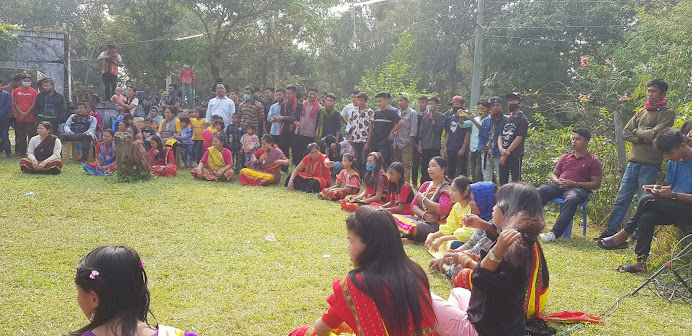
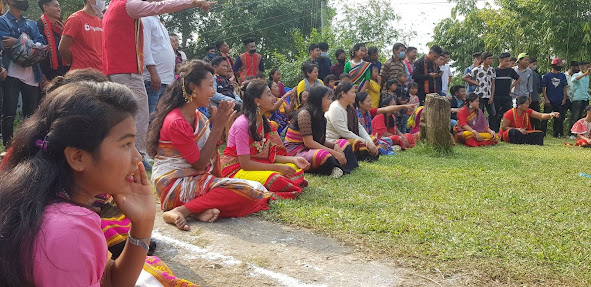




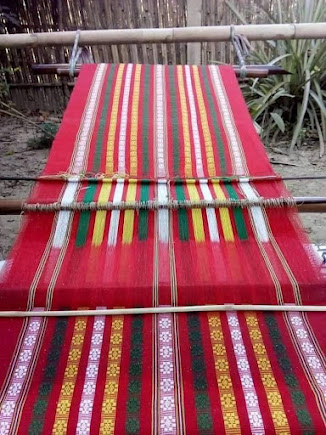


























































































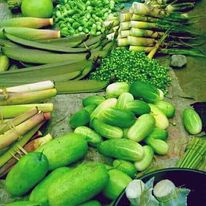







































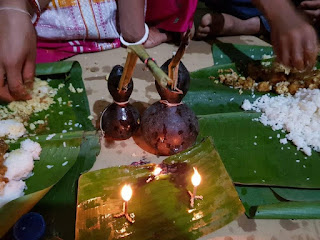





















%20of%20asds.jpg)
%20of%20asdas.jpg)
%20of%20adc.jpg)








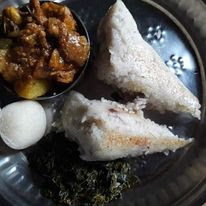


No comments
Post a Comment